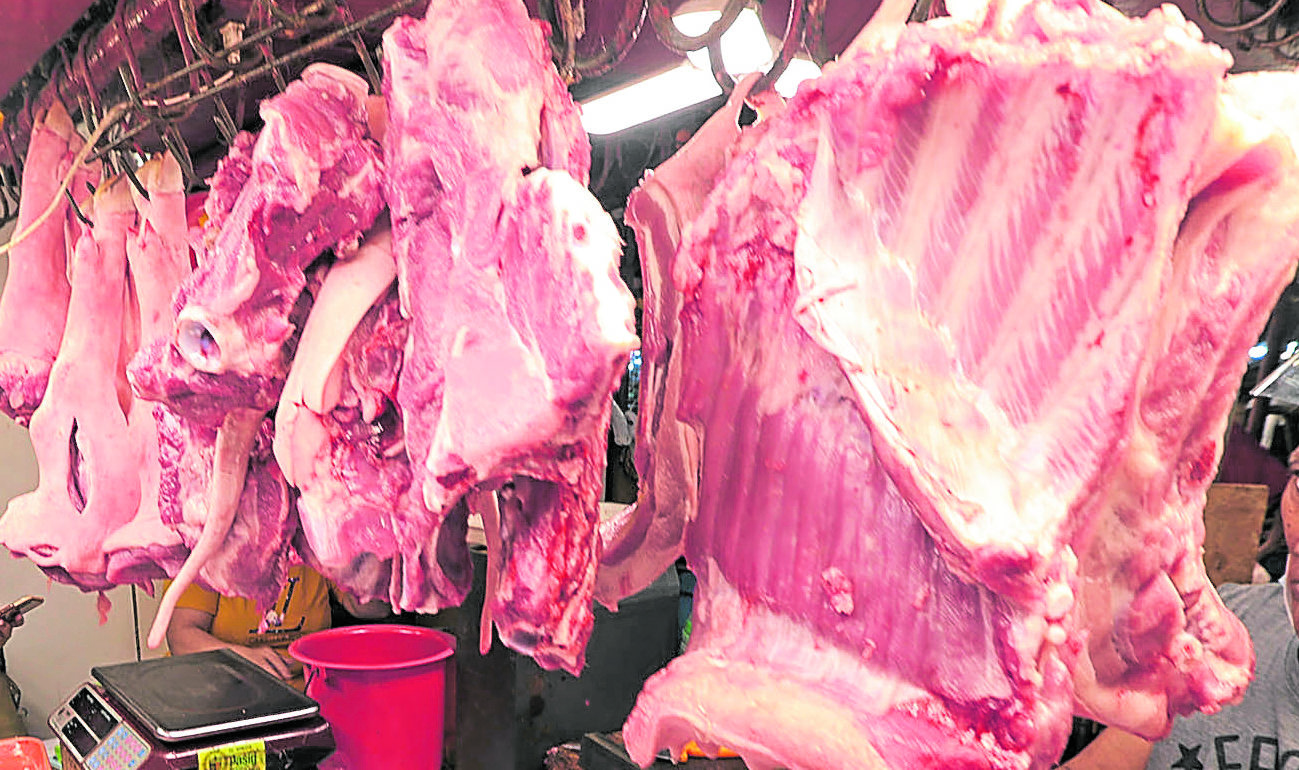
INQUIRER FILE PHOTO / GRIG C. MONTEGRANDE
MANILA, Philippines — Finance Secretary Carlos Dominguez III on Monday said he supports moves to extend higher hog import volume until the end of next year amid almost P3.7 billion in foregone revenues to date due to lower tariffs and still expensive pork and prevailing supply shortage up to yearend.
Separately, local rice farmers also on Monday said they incurred hefty losses and consumers paid more for consuming rice, while middlemen raked in more profits following the implementation of the Rice Tariffication Law (RTL) more than two years ago.
The latest Bureau of Customs (BOC) data provided by Dominguez showed the estimated revenue loss, out of the P19.4-billion dutiable value of imported swine meat which entered the country from April 9 to December 10, due to the implementation of Executive Order (EO) Nos. 128 and 134. These EOs set lower tariffs for pork imports covered by the higher minimum access volumes (MAVs) since April. EO 134, which superseded EO 128, will be implemented until May of next year.
Another Duterte order, EO 133, raised the 2021 MAV for pork meat to 254,210 metric tons instead of just 54,210 MT of imports due to the supply shortage wrought by the African swine fever (ASF) outbreak since late last year.
The lower tariffs and bigger import volumes to be allowed were being hoped to augment supply and bring down pork prices, which contributed the most to the Philippines’ above-target inflation – or faster price hikes than what the government deemed as manageable – this year.
Despite these EOs, estimates of the National Economic and Development Authority or Neda had shown pork supply in the Philippines will have a 155,500 MT deficit by yearend.
As such, pork prices again rose in November partly due to slow importation, limited distribution of imported pork, and rising demand amid the Christmas holiday season.
Asked if he was satisfied with the implementation of the EOs aimed at slashing pork prices, Dominguez replied: “Not entirely, as I understand there were regulations imposed by the DA-NMIS [Department of Agriculture’s National Meat Inspection Service] limiting the access of imported pork to certain markets.”
The state planning agency Neda had long flagged this concern, especially when pork prices declined in Metro Manila but not outside the National Capital Region (NCR) as imports were only delivered and sold in supermarkets and not in wet markets.
While the Department of Agriculture already issued a memorandum circular in October to distribute more pork to areas outside NCR as well as institutional buyers and processors, Neda was pushing to extend the validity of EO 133 up to December 2022 “to maximize the benefits of these [EOs].”
Dominguez said he was amenable to Neda’s proposal on EO 133.
As for EO 134, which is a revenue-eroding measure, the Department of Finance (DOF) will first study whether an extension may also be pursued, or not, Dominguez said.
During a virtual briefing, rice industry stakeholders pointed out there is no need to scrap the RTL altogether. Instead, the government should adopt a policy that would benefit the country, especially local farmers, in the long run.
“We are not saying to get rid of RTL completely but to revise the law so that it would benefit the local farmers.
Nowadays we are forced to sell our lands in order to pay off our debts. Our agricultural lands are being converted to industrial use instead of food production,” Rene Cerilla, legal and policy advocacy officer of Pambansang Kilusan ng mga Samahang Magsasaka (Pakisama), said in Filipino.
Federation of Free Farmers Cooperatives, Inc. National Manager Raul Montemayor said there were no significant changes since the RTL’s enactment. But this piece of legislation opened the door for “unlimited imports” and wholesale rice prices plummeted.
Montemayor said there was no significant improvement in production volume, yield, cost of production, and competitiveness amid the support coming from Rice Competitiveness Enhancement Fund (RCEF) and tariff proceeds.
As a result, he said rice farmers lost P56 billion after the law took effect while consumers paid P6.16 billion more for rice products.
Wholesalers and retailers, as well as importers, earned an additional P78.40 billion and P30.70 billion, respectively, from rice trade liberalization.
Montemayor noted a wider gap between wholesale and retail prices of rice following the law’s enactment in February 2019.
Citing data from the Philippine Statistics Authority (PSA), he said that in 2017, the price of wholesale rice stood at P37.46 per kilo while the price of retail rice was at P42.14 per kilo.
However, in 2020, the price of wholesale rice was at P33.64 per kilo while the price of retail rice was at P41.67 per kilo.
“[The RTL] should’ve lowered the retail price and passed the savings on to the consumers; instead the importers and traders pocketed the difference,” Montemayor added.
Advocacy group Tugon Kabuhayan said the government should craft more pro-producer policies on food production.
“We encourage government policy-makers to re-assess contemporary decisions that were made or to be made regarding the importation which has been definitely affecting our domestic producers,” the group said.
Prudenciano Gordoncillo, a professional lecturer of the University of the Philippines Los Baños’ Department of Agricultural and Applied Economics, said farmers should find other alternatives and not rely only on one crop to alleviate their plight in the long run.
“Our farmers should diversify and cultivate other crops. For example, corn is a good option. Corn used to be the primary source of carbohydrates in Visayas and Mindanao, then it was replaced by rice,” Gordoncillo said.